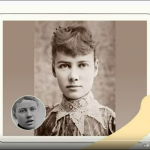World Photography Day took place on Saturday 19th of August. The photography industry is constantly changing and developing, witnessing some remarkable development since Joseph Niépce captured the first-known photographic image in the early 19th century.
World Photography Day presents an opportunity to look how far photography has come and celebrate some of the most influential figures in the industry. James Whitten, Marketing Manager at photoGuard, commens:
It’s amazing to think just how much photography has developed over a relatively short period of time.
James Whitten, Marketing Manager at photoGuard
Leading camera insurer photoGuard has explored the milestones and breakthroughs in the history of photography.
How has photography changed over time?
Just like any technological progress, much has changed since the initial pioneers of photography experimented with capturing still images. Less than 200 years ago eight hours of exposure time was needed to get one grainy image and now we carry around an instant video in our pockets.
The 19th century witnessed significant progress, as enthusiasts worldwide experimented with various techniques to get the very best images. Innovations emerged from the camera obscura, giving rise to techniques like the calotype and collodion, which shortened exposure times to just few seconds.
The last 100 years has seen several landmark achievements, as the barriers to what was possible in the world of photography were broken. Equipment such as drones, DSLR’s and GoPro’s, previously used only by professional photographers, soon became commonplace in the kit bags of amateurs. Now, many high-end cameras are built with jaw-dropping 50MP (megapixels) resolution or more.
Who are the most influential photographers of all time?
The 20th century has seen photographers break new ground and produce iconic images that will last a lifetime. Some of the biggest and most influential photographers include:
Ansel Adams
Ansel Adams was a landscape photographer and conservationist whose work elevated the North American photography. He rose to fame building up a portfolio of breathtaking images from National Parks across the west coast, most notably Yosemite. Adams was most well-known for his black-and-white landscapes, which he believed were much more expressive than colour shots.
Richard Avedon
Fashion and portrait photographer Richard Avedon was as big a name within the industry. Avedon worked with some of the biggest cultural icons of the 20th century, including The Beatles, Marilyn Monroe, and Martin Luther King. With daring and ground-breaking portraits, Avedon’s work gained such widespread recognition that his life served as the inspiration for the main character in the Fred Astaire film “Funny Face.”
David Bailey
East-ender David Bailey worked for British Vogue during the height of the swinging 60’s shooting some of the biggest stars in fashion and music. Bailey’s working-class upbringing was a marked contrast to other British photographers of the time and allowed him to empathise with his subjects and portray them in a different light.
A Kaleidoscope of Family Memories
For enthusiasts of family history and genealogy, photography serves as an indispensable time machine. Just as Ansel Adams captured the breathtaking landscapes of North American National Parks, our forebearers immortalised their own journeys, milestones, and loved ones in sepia and grayscale. These black-and-white images offer us a window into their world, allowing us to connect with the past and piece together the puzzle of our lineage.
World Photography Day not only demonstrates how far we’ve come from a technology stance, but simultaneously sheds light on the profound impact photography has had in preserving the stories of our families, allowing us to trace our roots and leave a visual legacy for the generations that follow.
Image Source:
- Photo by Bernardo Lorena Ponte: instant images



